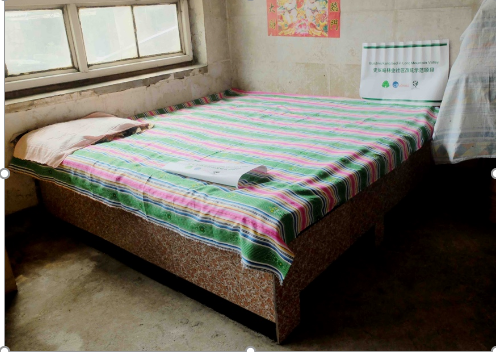
Improving Energy Efficiency of Traditional Chinese Kang Beds in Rural Areas
Details
Fuelwood consumption is one of the hidden dangers to public benefit forests in watersheds like the Miyun watershed that otherwise are hardly ever logged under the Natural Forest Protection Program. While it seems reasonable that if large diameter wood collection is banned at least small diameters should be harvestable, the effects of harvesting large amounts of small-diameter fuelwood can have their own devastating effects, mainly on the structural diversity and regeneration of a forest. This ultimately influences the forest’s health, making it more susceptible to pests and less biodiverse.
Recognizing that the sustainable use of small-diameter wood is as important as that of larger diameter wood, the Beijing Forestry Society (BFS) came up with a new method to reduce the total fuelwood consumption by making the primary consumer more efficient: the local Kang beds.
The Kang beds
A Kang bed is a heated sleeping platform widely used in villages in northern China. The heat from a stove is directed through flues under the bed, and used to heat its surface. However, the fuelwood consumption rate can be quite high
Based on previous experiences Kang beds can reduce fuelwood use by an average of 36% (or 850 kg) per bed per year. The energy-efficient Kang beds also generate more heat (about 1-2° during the cold winter months), as well as reducing reliance on local indigenous fuelwood species (particularly Mongolian oak) and increasing the use of farm waste (mainly corn cobs). A particularly interesting measurement has been the reduction in carbon dioxide emissions that has resulted from more efficient energy use: if a village of 200 households upgrades its Kang beds, it can it can achieve significant carbon dioxide emissions reductions.
Renovation of the Kang Beds
In June 2015 the Beijing Forestry Society hired contractors to build 5 new Kang beds in Shichangyu village, as each bed costs between $800-1000. The old beds were entirely removed (except in one case, see “Lessons Learned”) and the same brick used to build new, energy-efficient Kangs by making them opposed to the original Kangs more hollow, thus allowing the heat to reach the Kang surface more quickly. Solely the tiles used on the outside of the bed are new.
Fig. 1 A new, energy-efficient kang bed
Lessons learned
As the contractors were left to discuss the details of the Kang beds with the villagers themselves, it turned out that one family opted for an additional bed instead of the usual replacement of the old Kang in order to have a better guest bed when the children should visit. This unfortunately rather increases their fuel use than decreasing it. In the future the requirement of the replacement of the old beds will explicitly be added to the offset projects.
Further Resources
Project Report: Building Kang Beds in Long Mountain Valley
